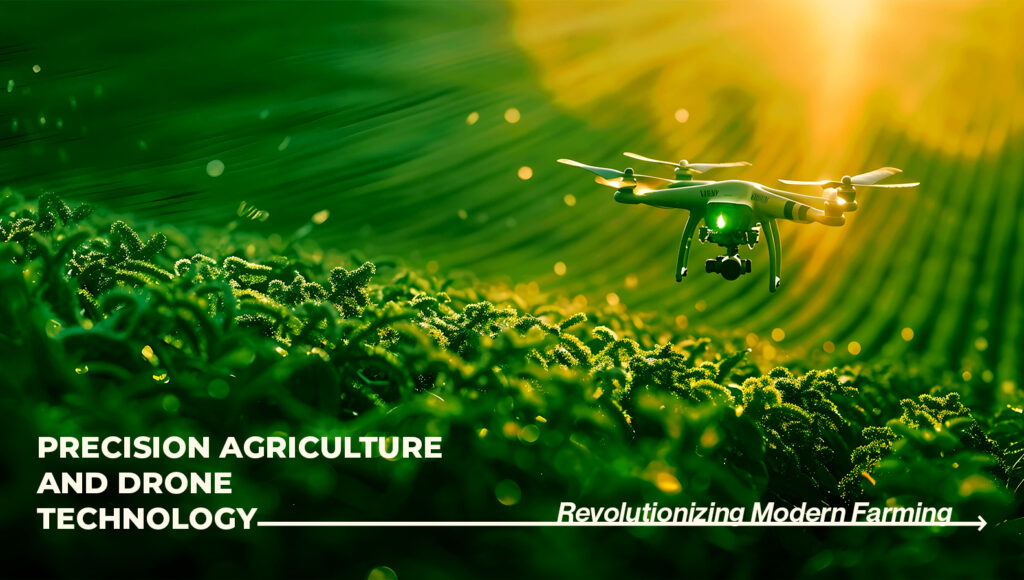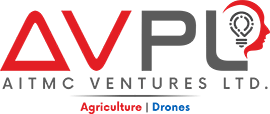
Precision Agriculture and Drone Technology: Revolutionizing Modern Farming
Farmers have increasingly adopted precision farming techniques in recent years, bringing transformative changes to agriculture. Drones, in particular, have played a pivotal role in this shift, enabling farmers to monitor crop health, streamline farm operations, and enhance efficiency. This modern approach is boosting productivity and paving the way for more sustainable agricultural practices. This article explores how drone technology significantly contributes to precision agriculture, its benefits, and the potential future of this innovative farming trend.
What is Precision Agriculture?
Precision agriculture is a modern farming method that utilizes advanced technology to monitor, measure, and address variability within crops. Unlike traditional farming, where water, fertilizers, and pesticides are applied uniformly across the entire field, precision farming tailors inputs to the specific needs of different areas within the farm. This technology-driven approach enables farmers to optimize resource use, reduce waste, and minimize their environmental impact, resulting in more sustainable and efficient farming practices.
The Potential Of Drones In Precision Farming
Drones or unmanned aerial vehicles have quickly made their presence felt and are considered one of the most crucial items in precision farming. Equipped with various types of sensors and cameras, drones collect much valuable information on the crops that can be rendered to farmers in regard to the health and condition of their fields. Based on this kind of data, farmers enhance their capability to make more knowledgeable decisions, contributing to successful yields and judicious use of available resources.
Types Of Drones Applied In Agriculture
- Fixed-Wing Drones: These are airplane-looking They are quite fit for covering a large area of farmland within a very short period. Their long flight time and ability to cover vast distances make them ideal for monitoring large agricultural fields.
- Multi-Rotor Drones: These drones are more versatile and can hover over specific areas, thus finding a perfect implementation in conducting detailed inspections of crops and
infrastructures related to irrigation.
- Hybrid Drones: This class of drones combines features from both fixed-wing and multi- rotor drones, hence introducing flexibility into the efficient monitoring of large- and small- scale
Key Benefits of Using Drone Technology in Agriculture
1. Enhanced Crop Monitoring
Probably the most valued benefit of drones in precision agriculture is monitoring the crops. Cameras on drones, those that are multispectral, hyperspectral, and thermal cameras, record high-resolution images and data necessary for understanding the conditions of the plants, soil nutrition, and causes of stress. The insights so derived from here help farmers in early detection of problems such as pests, diseases, and water stress and hence take appropriate timely interventions.2. Efficient Irrigation Management
Drones fitted with thermal sensors can perceive respective moisture in different parts of the area and give correct data to farmers on irrigation. Farmers may, therefore, check which places require more or less water and adjust irrigation systems to optimize resources. This approach ensures the provision of water to the crops appropriately to minimize waste and enhance growth.3. Precision Spraying of Pesticides and Fertilizers
Precision application of pesticides, herbicides, and fertilizers is made possible by drone technology. Targeting portions of the field in which these inputs should be used, drones ensure that too much chemical is not used on the field as a whole, therefore limiting environmental impact. This further ensures economic benefits to farmers for using fewer resources and getting value from them.4. Soil And Field Analysis
Equipped with special sensors, drones are able to carry out soil and field analysis, which becomes highly important for farmers from the point of view of soil conditions like health, nutrient level, and topography. The information obtained gives farmers an opportunity to create quite accurate maps of their farm for planning planting, irrigation, and nutrient management accordingly.5. Time and Labor Efficiency
Drone technology reduces the manual labor input in certain farm activities such as crop monitoring and field inspection. This gives the farmer the opportunity to focus on other very important activities as drones cover broad areas in a fraction of the time it would take. This will, consequently, improve efficiency at work while time and labor costs are saved.How Drones Improve Data Collection and Analysis
Drones have grown to be an important piece in data collection in precision agriculture. Information recovered from drone surveillance can be processed using special software, which can provide the farmer with a number of very useful insights on the condition of their fields. Here are some ways drones improve data gathering:
Aerial Imaging: The drones take clear, high-resolution images of the crops from the air for clear visualization by the farmer of the field. Many of the images taken are used to generally detect early signals of disease, pest, or water stress. 3D Mapping: Drones create highly detailed 3D maps of the topography for the farmer to study the contours of the land
and locate areas that are flood- or erosion-prone, or that suffer from any other environmental problem.
NDVI, Or Normalized Difference Vegetation Index: This is an index that measures plant health; it compares the absorption against visible light with its reflectance to near-infrared light. Drones can create a map of NDVI if they carry multispectral cameras, giving complete insight into crop health.
Case Study: Drones Transforming Agriculture in India
The adoption of technologies in agriculture, especially in developing countries like India, which has millions of farmers reliant on agriculture for their livelihood, has started gaining appreciable momentum. One of them is the state of Maharashtra, where drones are being used in the oversight of sugarcane crops.
The farmers in the area employ drones to check the health of the crops, log their growth, and identify areas that may need intervention. Using drones, they have reportedly cut the rate of water and fertilizer usage to a minimum quantity, thus increasing yields with cost savings.
In another case, tea plantations in Assam have initiated the use of drone technology for
precision spraying of pesticides. Drones have made the application faster and more efficient, covering big areas in a short time with reduced use of chemicals.
Challenges And Limitations Of Drone Technology In Agriculture
While drone technology offers many advantages, it does suffer from some drawbacks that must be sorted for wider acceptance in farming:
- Equipment Costs: Drones and other technologies are costly in the initial purchase, especially for small-scale
- Regulatory Restrictions: Certain regions have a restrictive law that governs the use of drones, hindering the full adoption in
- Data Management: This requires large amounts of data acquired through drones using specialized software and with expertise in analysis, hence posing the barrier to farmers lacking technical background.
- Weather Dependency: Drones depend on weather conditions, thus it reduces the functionality in extreme weather, such as heavy rain or strong
Future of Drone Technology In Precision Agriculture
Nevertheless, despite all these misfortunes, the future of drone technologies in agriculture looks very promising. Advancement in the capabilities of drones in terms of flight time, payload capacity, and sensors will further raise its application in precision farming. Also, this integration of AI and ML with drones could help automate analytics for farmers, making precision farming more approachable and effective.
This is also being driven by different government initiatives and subsidies provided by various countries to encourage the application of drone technology in agriculture. We will see more farmers exploit the use of drones for enhancing their productivity and good practices for sustainability in the near future.
Precision agriculture through drone technology is changing the face of farming, enabling farmers to base decisions on data with the purpose of optimizing resources, reducing waste, and improving yields. With ever-improving drone technology, integrating AI and IoT into the former would take precision agriculture one step ahead. Adopting such technologies would not only mean a step toward sustainable agriculture but also help meet the increasing demand for food across the world. It goes without saying that farming is definitely taking flight, with drone technology leading from the front.

